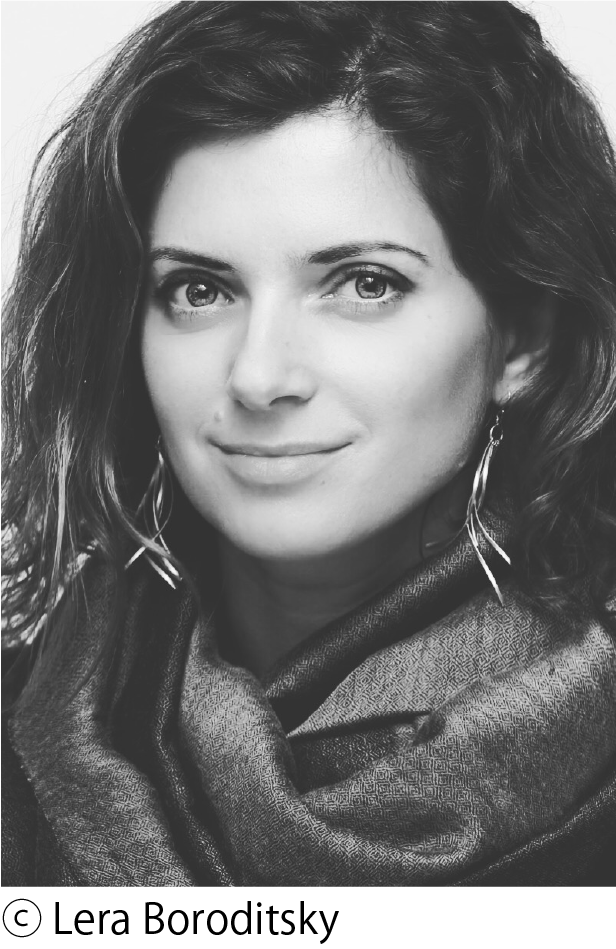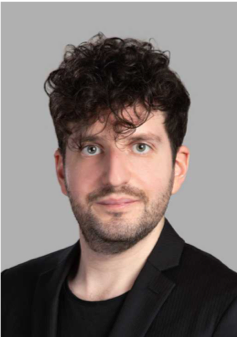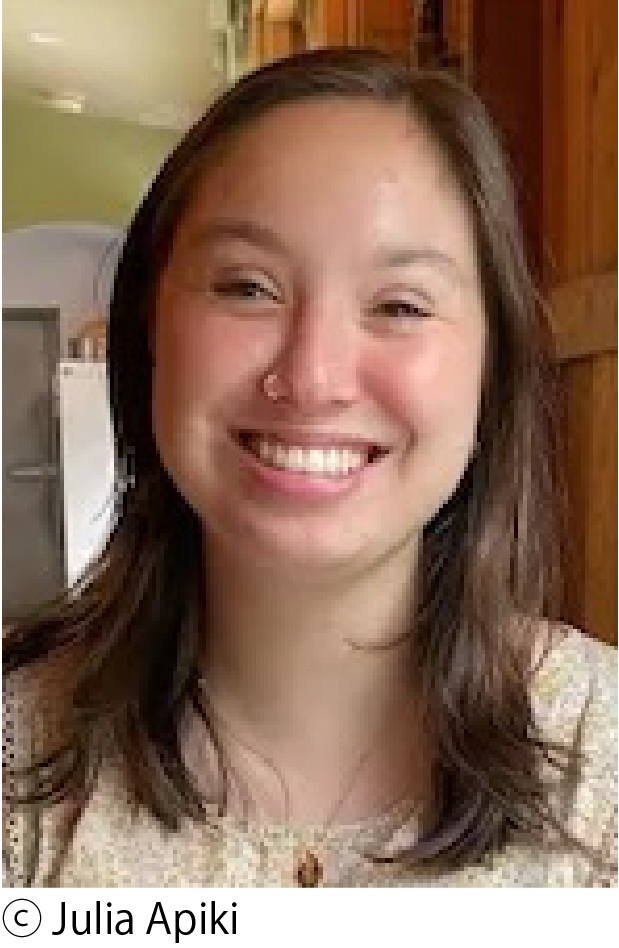INVITED SPEAKERS

Yves Barral, Cellular Biology, ETH Zurich
https://barral-lab.ethz.ch
Yves is broadly interested in asymmetric cell division and how it generates cellular diversity. One of his main research themes focuses on how single cells make and propagate adaptive decisions. As a paradigm for this, his lab studies the computing and decision-making machinery through which yeast cells decide to mate, choose a conjugation partner, or learn to avoid suboptimal ones based on the stimuli they receive, and how they memorize the information.

Lera Boroditsky, Cognitive Science, UC San Diego
http://lera.ucsd.edu/
Lera is a Professor of Cognitive Science at UC San Diego. She previously served on the faculty at MIT and at Stanford and as editor in chief of Frontiers in Cultural Psychology. Her research is on the relationships between mind, world and language (or how humans get so smart). Her TED talk on how language shapes thinking has been viewed more than 22 million times. Boroditsky has been named one of 25 visionaries changing the world by the Utne Reader, and is also a Searle Scholar, a McDonnell scholar, recipient of an NSF Career award and an APA Distinguished Scientist lecturer. She once used the Indonesian exclusive "we" correctly before breakfast and was proud of herself about it all day

Julien D’Huy, Evolution of Myth through Time, Collège de France
https://college-de-france.academia.edu/JuliendHuy
Julien holds a PhD in history and is affiliated with the Laboratoire d'Anthropologie Sociale (Collège de France / CNRS / EHESS; UMR 7130). Author of numerous papers in peer-reviewed journals and of two books, Cosmogonies (2020) and L'Aube des Mythes (2023) and one of the editors of the book Le Gai Sçavoir: Mélanges en Homage à Jean-Loïc Le Quellec (2023). Julien has developed a phylogenetic approach to reconstruct the evolution of myths through time.

Margarete Diaz Cuadros, Developmental Biology, Massachusetts General Hospital
https://www.diazcuadroslab.org/
Margarete’s research focuses on developmental timing. All mammalian embryos undergo a highly conserved sequence of developmental events, but different species complete this sequence at significantly different speeds. Astonishingly, embryonic development is completed in 15 days in mice, 56 days in humans, and 116 days in elephants. How species-specific developmental rates are set represents a major unanswered question in developmental biology. Margarete’s lab explores the role of mitochondrial metabolism in determining the pace of developmental clocks in both mammalian and invertebrate models. The long-term goal of her research program is to manipulate developmental speed for translational applications.

Thomas Michaels, Theoretical Biological Physics, ETH Zurich
https://bc.biol.ethz.ch/research/michaels-group.html
The Michaels group uses ideas from theoretical physics, control theory and computational biology, in close collaboration with experimentalists, to develop a quantitative understanding of complex systems in biology. Most of their current research seeks to understand how functional and pathological biomolecular aggregation processes are regulated in time and in space in living systems. Current projects include understanding how liquid organelles act as control units that regulate biochemistry inside living cells and modelling the pathological aggregation of proteins into amyloid fibrils.

Leon Peshkin, Systems Biology of Aging and Embryology, Harvard Medical School
https://www.linkedin.com/in/leon-peshkin-2b085b/
Leon came into Systems Biology with a PhD in Artificial Intelligence to help advance probabilistic modeling and data analysis in biological and medical research. Today, his passion lies in understanding the root causes of aging and unlocking nature's mechanisms for longevity and the reversal of age-induced damage, which naturally occurs in an embryo - germ line reset. The interface between embryology and aging, the onset of cell differentiation and eventual de-differentiation, is the focus of his work on model organisms, e.g., Xenopus. His group has introduced a scalable platform for intervention testing in daphnia as a way to obtain data amenable to Machine Learning.
More on Leon's projects and approaches: Blueprint For Radically Open, Citizen Science Approach To Aging Research.

Warrick Roseboom, Human Perception, University of Sussex
www.warrickroseboom.com
Warrick is a Senior Lecturer and researcher based in the Department of Informatics and School of Psychology at the University of Sussex. His research focuses on human perception. He was part of the six-partner EU project Timestorm, which aimed to equip artificial systems with human-like temporal cognition. Warrick is interested in how usually coherent perception can result from sometimes incoherent input. He is also interested in the interaction of temporal perception with conscious experience through phenomenal causality, the sense of agency, and temporal prediction. He uses a combination of human behavioral, computational modelling, neuroimaging, and artificial systems approaches.

Joseph Thornton, Molecular Mechanisms of Evolution, University of Chicago,
https://voices.uchicago.edu/thorntonlab/
Joe studies the mechanisms by which protein functions evolve. He and his group do this by resurrecting, experimentally characterizing, and manipulating ancient proteins. This kind of work is powerful and fun — and possible at all — because they are a diverse group of evolutionary biologists, biochemists, biophysicists, computational biologists, geneticists, and molecular biologists, all working together and freely mingling our expertise, techniques, and ideas.
More information and details can be found on the lab website (link above).

Cédric Villani, Application of Mathematics to Physics, IHES & Université de Lyon,
https://www.ihes.fr/en/professeur/cedric-villani-2/
Cédric research focuses on the study of partial differential equations and their applications to physics, particularly to statistical physics and optimal transport theory. Important recognitions underline the importance of his work. In 2009 he received the Henri Poincaré prize, and in 2010 he was awarded the Fermat prize and the prestigious Fields medal, the highest recognition in mathematics. Since then, he is strongly committed to the popularization of science through the publication of several books.
.
SENIOR GUESTS

Mikhail Gromov, Mathematical Biology, IHES & NYU
https://www.ihes.fr/~gromov/
Misha, a world renowned geometer and Abel Prize winner (2009), has totally reshaped his discipline with his work: of fundamental importance are his “soft” approach to geometry and his contribution, in particular, to Riemannian geometry, geometric group theory, and symplectic geometry. His extra-mathematical interests extend to biology, the thinking process, artificial intelligence, language and far beyond. He has written extensively on the frontiers of pure mathematics and science.

Eugene V. Koonin, Evolutionary Genetics, National Center for Biotechnology Information, National Library of Medicine, National Institute of Health (USA)
https://www.ncbi.nlm.nih.gov/research/groups/koonin/
Eugene is an NIH Distinguished Investigator, the leader of the Evolutionary Genomics Group at the National Center for Biotechnology Information (NCBI) at the NIH, and a member of the National Academy of Sciences of the USA. His research focuses on genome evolution, especially in microbes and viruses, host-parasite coevolution, and more specifically, functions and evolution of antivirus defense systems including CRISPR-Cas. He also works on the general theory of evolution based on physical principles.

Vincent Lafforgue, Algebraic Geometry, CNRS-U. Paris Cité
https://vlafforg.perso.math.cnrs.fr/
Yann’s current interests include AI, machine learning, computer perception, robotics, and computational neuroscience. He is best known for his contributions to deep learning and neural networks, particularly the convolutional network model which is very widely used in computer vision and speech recognition applications. He has published over 190 papers on these topics as well as on handwriting recognition, image compression, and dedicated hardware for AI.

Nicolas Minc, Cellular Morphogenesis, Institut Jacques Monod, U. Paris Cité/CNRS
http://www.minclab.fr/
Nicolas and his group aim to understand how cells solve geometrical problems, to perform their functions, and define their morphogenesis. They study questions of cell division, growth, polarization, and multicellular morphogenesis, and combine mathematical models and quantitative biology approaches to address how shape sensing may emerge from the physical biology of the cytoskeleton, the cell surface, and the cytoplasm.

Pierre-Yves Oudeyer, AI and Cognitive Science, INRIA Bordeaux
https://flowers.inria.fr
Pierre-Yves and his team study lifelong open-ended learning, and the self-organization of behavioural, cognitive and language structures, at the frontiers of AI and cognitive sciences. Within the field of developmental AI, they use machines as tools to understand better how children learn, and study how machines could learn autonomously like them and integrate within human cultures. They study models of curiosity-driven autotelic learning, enabling humans and machines to set their own goals and self-organize their learning curriculum. They work on applications in education and assisted scientific discovery, using AI techniques in the service of humans, fostering learning, curiosity, exploration and creativity.

Bob Penner, Mathematics, IHES & UC Los Angeles
https://www.ihes.fr/en/professeur/robert-c-penner/
Bob's post-doctoral work in geometry and high-energy physics apply also to the combinatorics and topology/geometry of RNA and protein. Indeed, combinatorics is independent of scale, whether the Platonic scale of pure math, the Planck scale of strings, or the Angstrom scale of macromolecules. This study of biological macromolecules has been his inroad to more extensive work in theoretical biology generally. One principal current activity has been developing a new tool in structural biology for estimating backbone-free energy from geometry, for example, applied to viral glycoproteins.

Yukiko Yamashita, Cellular Biology, MIT
https://yamashitalab.wi.mit.edu/
Yukiko and her lab is interested in germline immortality – the mechanism that enabled the continuation of the lineage through 1.5 billion years of multicellular organisms' history, and how this mechanism may be involved in the process of speciation. Specifically, they investigate the mechanism of rDNA copy number maintenance, the function of satellite DNA and asymmetric cell division.
JUNIOR GUESTS

Julia Apiki, mRNA localization, Massachusetts Institute of Technology
In both Drosophila and mammalian models, spermatogenesis provides a striking example of translational regulation. Many genes required for spermiogenesis are transcribed in earlier stages of spermatogenesis but are not translated for several days. The cellular mechanisms which repress translation of mRNA for these long periods of time, while preventing their degradation, remain poorly understood. Julia is studying the striking localization of one of these long-repressed mRNAs, which encodes a protamine, to the plasma membrane. She is interested both in the mechanism of how this mRNA localizes to the plasma membrane as well as the possible function of this localization.

Aliaksandr Damenikan, Cellular Biology, ETH Zurich
Alex is a PhD student at ETH Zurich in the Barral group. In his project he focuses on understanding the molecular mechanisms of learning observed in sexual behavior of Saccharomyces cerevisiae. Alex uses molecular genetics and live-cell microscopy to explain the links between information stored in DNA (inheritance) and individually acquired historic information (memory).

Kseniya Petrova, Bioinformatics, Harvard Medical School
I'm a Research Assistant working with Leon Peshkin at HMS. Broadly, I'm interested in biological processes occurring over relatively long periods: developmental biology, cell differentiation, ageing, and evolution. The stochastic/deterministic nature of the processes, how far we can go with mathematical modelling and bioengineering.

Gabriel Valdebenito, Cell Biology, Massachusetts General Hospital
Gabriel is interested in defining the role of cellular metabolism as the primary regulator of the segmentation clock across mammals. The overarching goal of his work is to address important questions in developmental biology related to the manipulation of the segmentation clock through altering the NADH shuttling systems in human presomitic cells derived from pluripotent stem cells. His expertise in mitochondrial biology has prompted him to focus on bioenergetics as an upstream orchestrator of protein translation, a key process involved in the oscillation of segmentation clock genes.

Nicolas Yax, Machine Learning, INRIA Bordeaux & ENS Paris
Nicolas is a PhD student under the guidance of Pierre-Yves Oudeyer (INRIA) and Stefano Palminteri (ENS) in the FLOWERS and HRL teams, respectively. His research centers on elucidating the intricacies of human and artificial intelligence with an emphasis on decision making processes. His recent investigations focus on understanding the capabilities of language models by employing methodologies from cognitive sciences and biology. Nicolas also harbors a keen interest in leveraging insights from neuroscience and psychology to cultivate more human-like AI systems, thereby facilitating deeper comprehension of human cognition.
